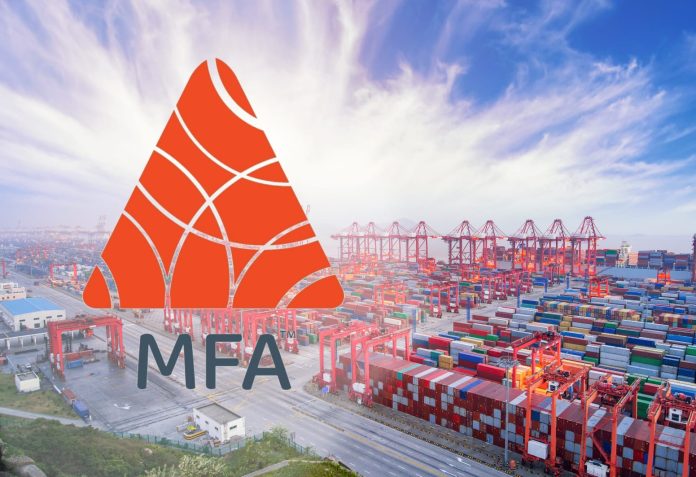MFA, formerly the MulteFire Alliance, is to deliver a set of ‘technology blueprints’ so every different business in every different industrial ‘vertical’ can specify and source industrial 5G devices, and the cellular side of the Industry 4.0 market moves faster. Its shift to ecosystem-building in the industrial 5G market has come as the original MulteFire project, to appropriate LTE for unlicensed spectrum, has found its way back into the 3GPP agenda.
The development of 5G NR-U, for use of standalone 5G in unlicensed spectrum makes MulteFire an LTE brand without a 5G future, effectively. MulteFire lives on as an LTE-based technology, with Nokia announcing the first (long-delayed) MulteFire device last week, hopeful its arrival will spur a rush of new activity in the private LTE space. But the alliance’s technical remit is limited by the industrial lifespan of LTE, outside of 3GPP circles.
With 5G everything comes back ‘in-house’, and the rebranded MFA has instead reorganised to make sure the mistakes of the past, with the spluttering MulteFire ecosystem, are not made with 5G NR-U. More than this, it is campaigning for industrial 5G, in general – spanning all kinds of nationally licensed, locally licensed, and shared access bands as well. It is branding this as a new ‘Uni5G’ (universal 5G) ecosystem, and handing out Public Land Mobile Network (PLMN) IDs, accredited by the ITU, to identify private networks and authorise devices on them.
MFA has set itself a task to establish an easier trading market inside, between industrial 5G buyers and sellers. Its new tech blueprints, coming available in the fourth quarter of 2021, will ensure industrial 5G devices will be properly specified and readily available, it says. These blueprints will reveal an industrial 5G matrix that plots cellular features against use case characteristics, and makes cellular-based solutions simpler to specify.
Which was a part of the problem with LTE-based MulteFire, as well as plain old LTE. A lack of devices, because of a lack of chipsets – as the chicken-and-egg of supply-and-demand was tilted by the industry rush on consumer 5G, and broken by the global Covid-19 pandemic – made MulteFire into a wallflower, even as the rest of the industry copied its steps. But industrial-grade LTE devices have been hard to come by, anyway.
Asimakis Kokkos, technical specification group chair at MFA, remarks: “Operators know what they want on devices, but industrial users do not. They can tell you what they need, what the solution has to do, but they are not much good at translating all of that into telecoms language – and not to, say, 3GPP specifications. The question is how to bridge this gap – so industry knows what to order and vendors know what to make. That is what MFA is going to do.”

He goes on: “Industrial users don’t want to pay for features they don’t need – which just consume battery. They want simple, effective solutions. Which is different from what the operators want. So that is the direction we’re moving in. 3GPP specs have 600 features, say, which are known to everybody. The question is which of these features should be implemented in a device to go into a solution for the logistics industry, say?
“Or into a bunch of devices and a network system, to support certain logistics apps? Nobody can answer that today. Because the logistics industry is not represented in these 3GPP discussions – and does not know how to ask a chipset vendor or a device maker to make a solution with these 10 or 15 features, out of all these 600. That is what these blueprints will do – to guide different verticals to develop devices for their own specific needs.”
He traces it back to the ecosystem-breakdown with MulteFire, causing most of the industry to write LTE off in unlicensed spectrum. Nokia, forced to develop a chipset solution off its own back, should get credit for sticking to its guns. Mobile operators hated the idea from the start, 3GPP circles forced its proponents into the shadows, and even Nokia’s old compadres in the old MulteFire Alliance effectively laid down their arms.
The company’s new MulteFire router gives it a first-mover advantage on 14-odd million industrial customers, it reckons. But Nokia is starting from practically nothing with MulteFire, in a bid to explode private LTE into unlicensed 5 GHz spectrum. “We want the ecosystem to grow. We want to be the catalyst,” says Kokkos. He is speaking for MFA, but he doubles-up as head of industry environment strategy at the Finnish network vendor, as well.
He comments: “These blueprints have been missing, which has created this chicken-and-egg situation – show me the devices, show me the ecosystem, show me the business. We want to fix this faulty chain, to say, ‘here are the blueprints’, for you – the farmer, the manufacturer, the mining company. We know [these blueprints] because we have spoken with you so many times. And because we have Nokia, Ericsson, Huawei, Intel, Qualcomm behind us.”
Which has not always been the way. Because, make no mistake, MulteFire has been a Nokia show. Qualcomm and Huawei, fellow founders in the original alliance, have had their attentions drawn away by the consumer rush on 5G devices and pressing geo-political affairs, respectively. Whereas unlicensed LTE has remained a key part of Nokia’s enterprise strategy all-through, where it has counted-out and engaged industrial targets for private cellular sales.
Is there a sense, inside Nokia, that it has done the donkey work for the rest of the market – on unlicensed cellular with MulteFire, and on industrial-grade cellular via its progressive engagements with enterprises on private LTE, and latterly private 5G? It is an unfair question, perhaps; Kokkos is here to represent MFA. He does not want to speak on behalf of Nokia – which is happy to speak for itself, anyway. But his first-person response goes both ways.
“We started with a vision for 3GPP tech in unlicensed spectrum. When, to be honest, there was a lot of pressure from operators because they thought it was a threat – this idea, ‘you appear with spectrum and you take my business’. We had other problems, with [consumer] 5G timing, which every company prioritised, and with the global pandemic. And there may have been mistakes along the way, but MulteFire is mutating now to be the catalyst.
“There will be MuleFire and Uni5G; there will be a mixture. And you ask about [alliance] members, and more will be interested. We are talking to other organisations, as well – to relevant ones like 5G-ACIA, and more with 3GPP. That is how the alliance is shaping up. The need was less clear before; MulteFire was thought of as competition. But it is very clear, now, because Wi-Fi has failed in industry and because LTE, MulteFire, and Uni5G are the answer.”
The engagement with 5G-ACIA, as the alliance for connected industries and automation, is interesting. 5G-ACIA tends to be associated with elite-level manufacturing, and the old industrial favourites in the home of Industrie 4.0 in Germany. It has grown influential in the telecoms market as the most prominent non-telecoms voice at the 3GPP table, respresting industrial requirements in the 5G standardisation process, notably with post version-16 releases.
Is there a sense that mainstream Industry 4.0 requirements have been flowed-into and blue-printed out of 3GPP already, and that MFA exists to represent the impossible array of forgotten-about industrial needs besides? Or will the new MFA blueprints cover traditional manufacturing as well, and knit together the developing cross-sector interplay at a more functional layer? It is the second case, says Kokkos.
“3GPP provides the specs, but does not select or optimise. 5G-ACIA is at a higher level, with white papers about how the system works. What is needed is somebody to put these things together, to say, ‘industry A needs devices B, C, D, with features X, Y, Z’. We will take the 3GPP specs, as they are, and the industrial requirements, as defined in 5G-ACIA, and match them together. That is the blueprint; that is what’s missing. We are not competing.”
But, hang on; is it not more complicated than that? Surely the demands from industry – from every different company in every different ‘vertical’ sector – are too varied to easily reduce into a handy set of blueprints? Surely, the multiplication and fragmentation of industrial use cases messes with the economies-of-scale, to the point a blueprint-matrix does not so easily resolve the chicken-and-egg of supply-and-demand?
“No, you map 600 features, say, in 70-80 apps in eight industries, and you look at their similarities, and start to group them. But this is the thing – you have this high-level idea from 5G-ACIA, say, and think, ‘oh my god, it is impossible’. But you just need somebody to roll up their sleeves to make it happen. It is what we’ve found with MulteFire, already; that once you get going, you realise it is not so bad, not so difficult.”

